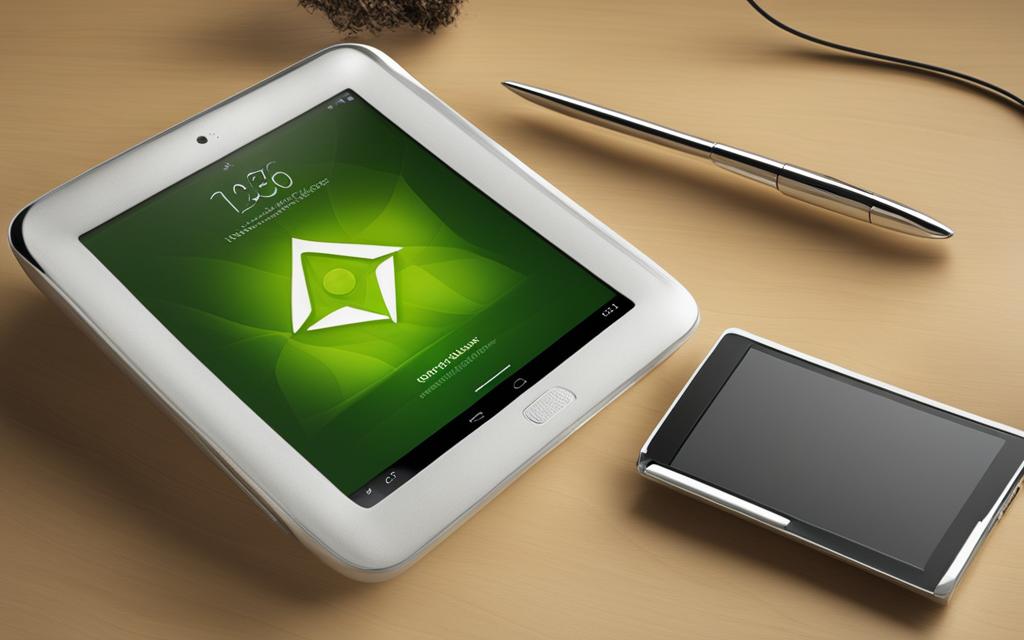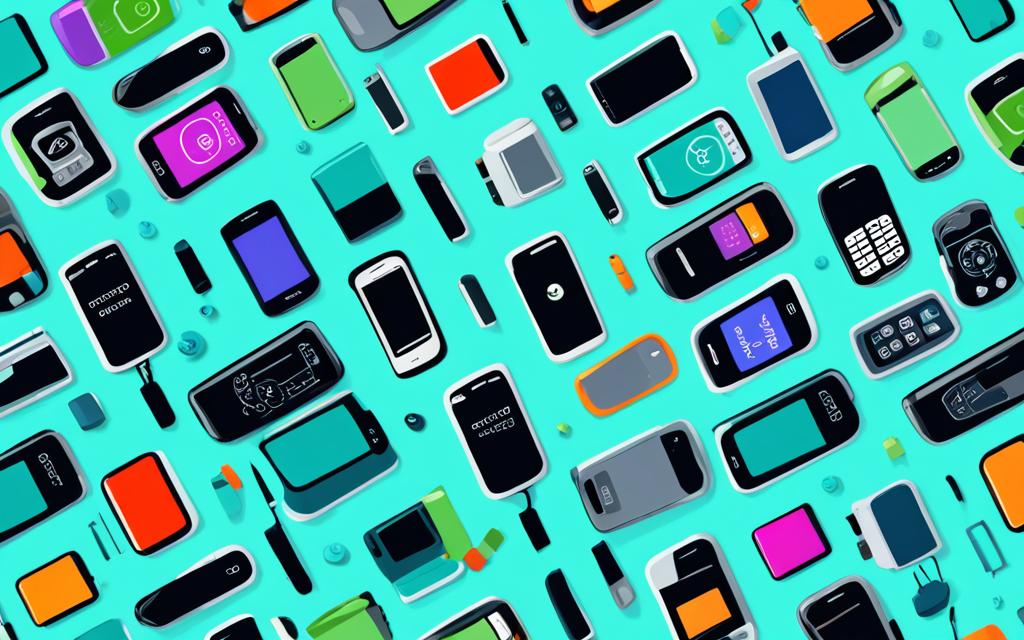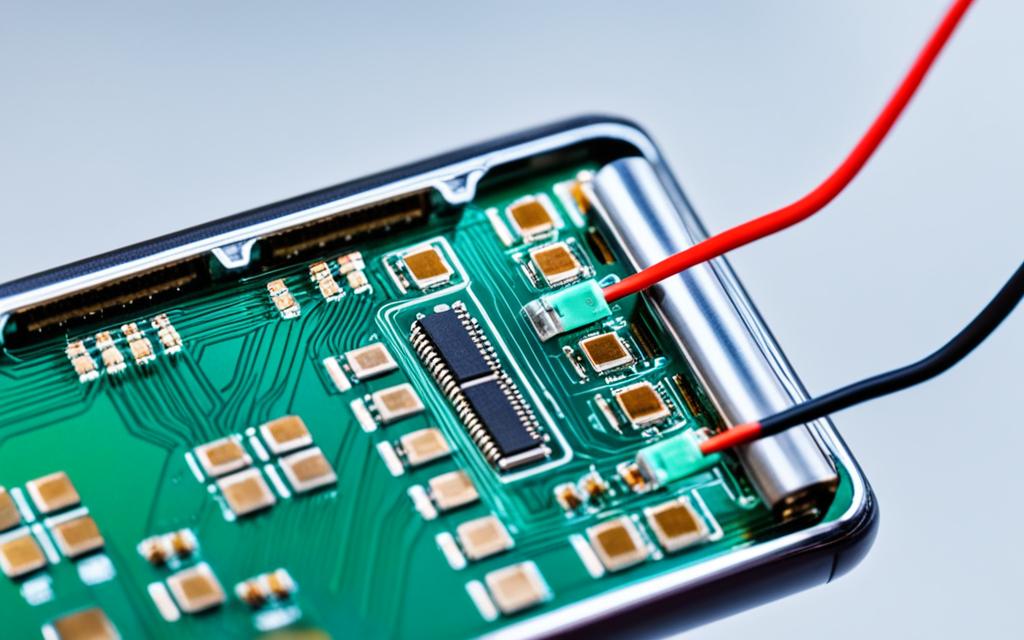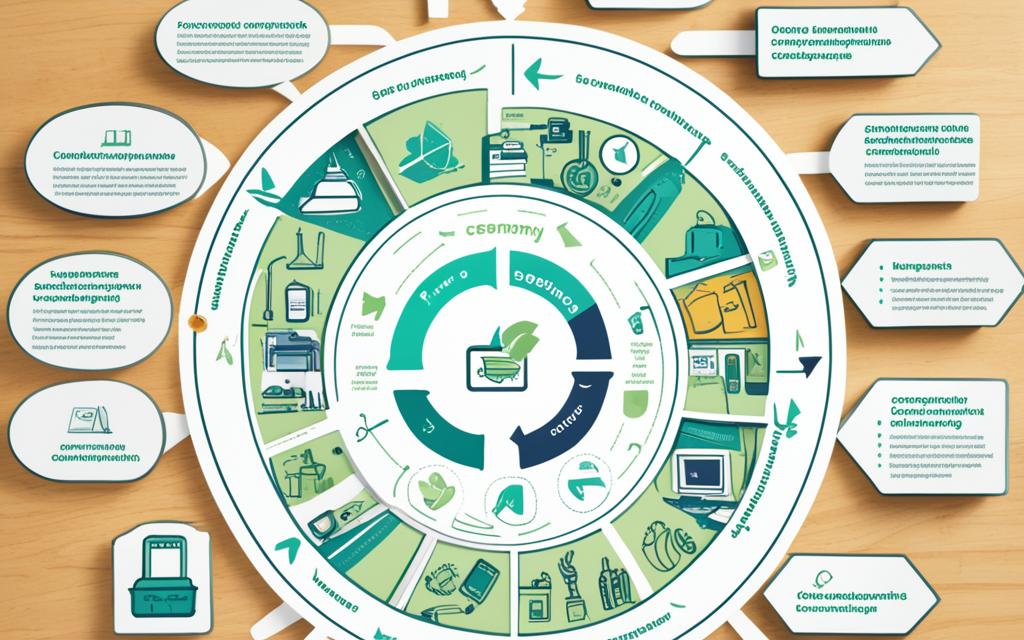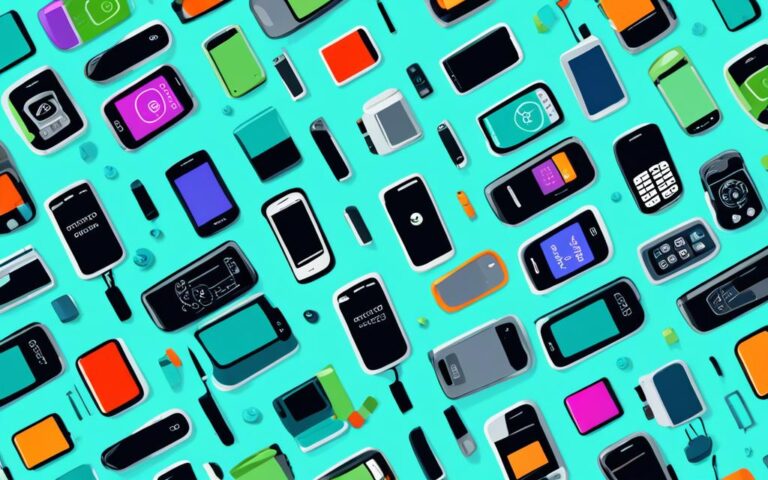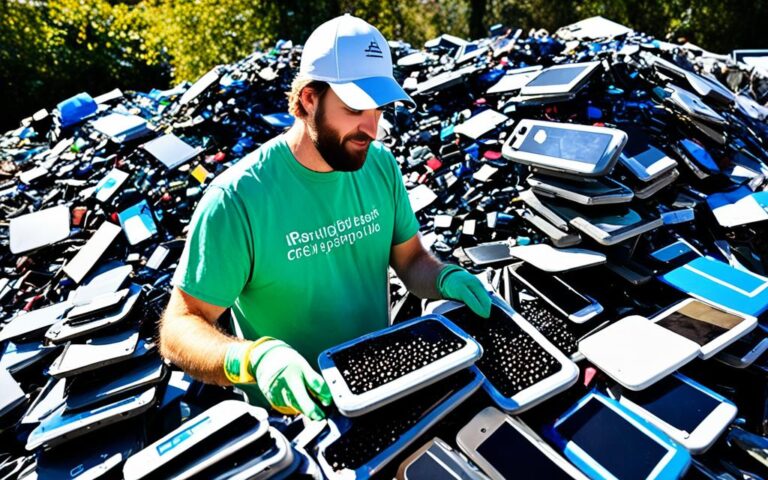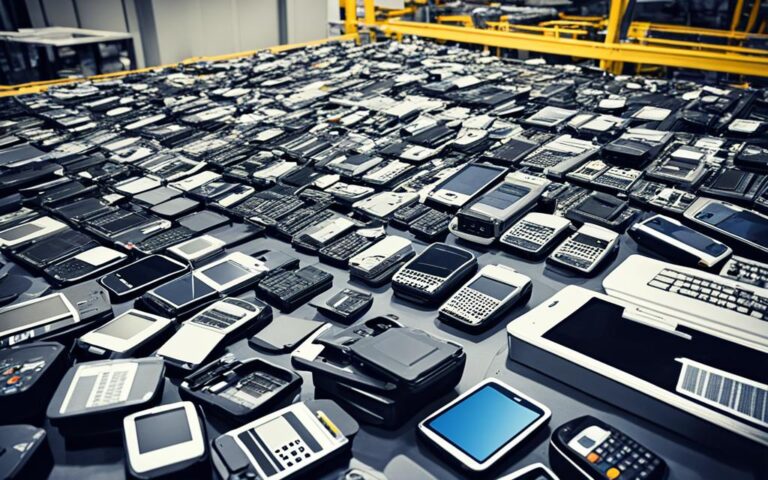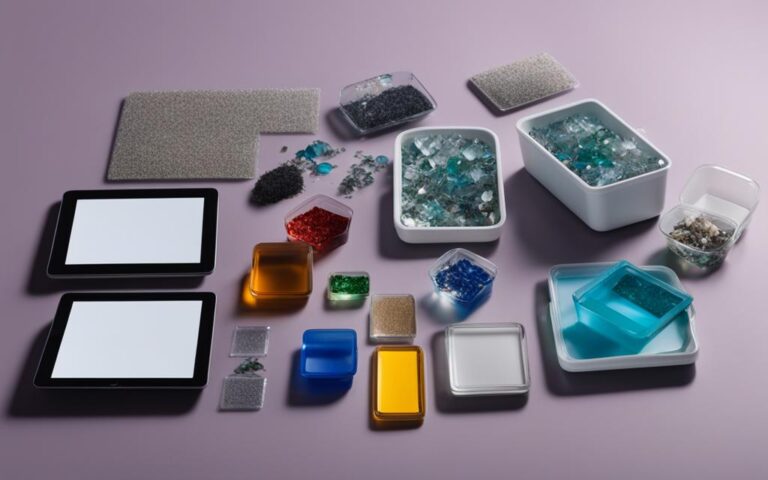The Intersection of Design and Sustainability in Phones and Tablets
Sustainability and design are two key factors shaping the future of phones and tablets. As our reliance on technology grows, it is essential that we consider the environmental impact of our devices. The field of sustainability has evolved, emphasizing systems thinking and a holistic approach to address environmental concerns.
True sustainability is challenging to achieve, but the concept of a circular economy has gained traction in promoting the reuse and recycling of electronic devices. By incorporating sustainable design principles, such as energy efficiency and material selection, manufacturers can create products with reduced environmental impact and longer lifespans.
In this article, we will explore the EU’s regulations on replaceable smartphone batteries and their implications for manufacturers and consumers. We will also showcase the Fairphone, a sustainable and ethical option in the smartphone market. Finally, we will discuss the global influence of EU regulations and the role of design in driving sustainable innovation in the tech industry.
Join us on this journey to discover the intersection of design and sustainability in the world of phones and tablets, and explore the future of eco-friendly technology.
The EU’s Regulations on Replaceable Smartphone Batteries
In an effort to promote sustainability and reduce electronic waste, the European Union (EU) has implemented regulations requiring smartphone manufacturers to incorporate easily replaceable batteries by 2027. This groundbreaking step aims to encourage the reuse and recycling of electronic devices, ultimately minimizing their impact on the environment.
The EU’s commitment to a circular economy and sustainability extends beyond smartphones. The regulations also include requirements for battery longevity and accessibility in replacement, ensuring that consumers have greater control over their devices and the ability to extend their lifespan.
“By mandating easily replaceable batteries, the EU is paving the way for a more sustainable future in the tech industry. This regulation empowers consumers to reduce electronic waste and make environmentally conscious choices,” says Anna Johnson, environmental activist and founder of GreenTech Solutions.
The implications of these regulations are twofold. Manufacturers will need to adapt their designs and processes to accommodate replaceable batteries, fostering a shift towards more sustainable product development. Additionally, consumers can expect potential cost savings through battery replacement instead of having to purchase entirely new devices.
The EU’s regulations on replaceable smartphone batteries serve as a catalyst for change within the tech industry. They set an important precedent and may influence global manufacturers to adopt more sustainable practices. By aligning design principles with environmental considerations, smartphone manufacturers can help create a greener, more environmentally-friendly future.
| Benefits of Replaceable Smartphone Batteries | Implications |
|---|---|
| Reduces electronic waste | – Manufacturers need to adapt their designs and processes |
| Encourages reuse and recycling | – Potential cost savings for consumers |
| Greater control over device lifespan | – Potential for a more sustainable tech industry |
The Fairphone: A Sustainable and Ethical Option
The Fairphone, manufactured by Murena, offers a sustainable and ethical alternative in the smartphone market. Made from fairly sourced and recycled materials, the Fairphone incorporates a modular design that makes it easy to repair and customize. It features easily replaceable batteries, a longer warranty period than many other smartphones, and carries certifications for sustainability and user health. The phone also prioritizes user privacy, offering a DeGoogled version of the Android operating system. While it may have some limitations, such as carrier compatibility and availability, the Fairphone represents a shift towards more sustainable and responsible technology consumption.
By choosing the Fairphone, consumers can make a positive impact on the environment and society. The use of fairly sourced and recycled materials reduces the demand for new resources and minimizes the carbon footprint associated with smartphone production. Additionally, the modular design allows users to easily repair and upgrade their devices, extending their lifespan and reducing electronic waste. The easily replaceable batteries provide convenience and affordability, eliminating the need to replace the entire phone when the battery deteriorates.
Key Features of the Fairphone:
- Modular design for easy repair and customization
- Easily replaceable batteries
- Longer warranty period than many other smartphones
- Certifications for sustainability and user health
- DeGoogled version of the Android operating system prioritizing user privacy
Furthermore, the Fairphone goes beyond sustainability by fostering ethical practices throughout its supply chain. The company ensures fair working conditions for the workers involved in the production process and aims to reduce the use of conflict minerals. By supporting Fairphone, consumers contribute to fair and responsible business practices, encouraging other companies to follow suit.
Although the Fairphone may have certain limitations in terms of carrier compatibility and availability, its existence in the market highlights the demand for more sustainable and ethical smartphones. By choosing the Fairphone, consumers send a clear message to the industry that sustainability and ethics are paramount in their purchasing decisions.
“The Fairphone represents a shift towards more sustainable and responsible technology consumption.”
The Fairphone is more than just a smartphone; it embodies a broader movement towards a more sustainable future. As technology becomes an integral part of our daily lives, it is crucial to consider the environmental and social impact of our devices. By supporting products like the Fairphone, consumers contribute to a greener and more ethical world, where technology is aligned with sustainability.
A Comparison of Fairphone and Conventional Smartphones
| Features | Fairphone | Conventional Smartphones |
|---|---|---|
| Sustainable Materials | ✓ | ✗ |
| Modular Design | ✓ | ✗ |
| Easily Replaceable Batteries | ✓ | ✗ |
| Longer Warranty Period | ✓ | ✗ |
| Certifications for Sustainability | ✓ | ✗ |
| Privacy-focused Operating System | ✓ | ✗ |
The Global Influence of EU Regulations
The EU’s regulations on replaceable smartphone batteries have the potential to make a significant impact on the global technology market. As smartphone manufacturers are unlikely to create separate models for the EU and other regions, these regulations will likely influence design and manufacturing practices worldwide. With the EU’s strong commitment to sustainability and the right-to-repair movement, other regions may follow suit, encouraging manufacturers to adopt more sustainable practices and make their products easier to repair and recycle.
This global influence can contribute to a greener and more sustainable future for technology consumption worldwide. By setting a precedent, the EU is promoting a shift towards a circular economy and responsible technology consumption. Manufacturers will need to adapt their design and production processes and prioritize eco-friendly practices to comply with these regulations. As a result, consumers can expect to have access to more sustainable and environmentally friendly technology options.
The Impact of EU Regulations on Technology Design and Manufacturing
EU regulations on replaceable smartphone batteries will undoubtedly reshape technology design and manufacturing practices worldwide. The requirement for easily replaceable batteries will prompt manufacturers to reevaluate their product designs and make them more sustainable and repairable. This shift towards more eco-friendly practices aligns with the growing global demand for responsible and sustainable technology.
“The EU’s emphasis on sustainability and the right to repair sets an important standard for the global technology industry. By encouraging manufacturers to prioritize replaceable batteries and eco-friendly practices, we can pave the way for a more sustainable future.” – John Green, Tech Analyst
Furthermore, these regulations can stimulate innovation in the technology sector. Manufacturers will need to explore new materials, manufacturing techniques, and design strategies to comply with the regulations and meet consumer demands. This will drive the development of more sustainable and efficient smartphones and tablets, benefiting both the environment and consumers.
| Benefits of EU Regulations on Technology | Challenges of EU Regulations on Technology |
|---|---|
|
|
The table below summarizes the benefits and challenges associated with the EU’s regulations on technology:
Benefits and Challenges of EU Regulations on Technology
| Benefits | Challenges |
|---|---|
|
|
The Role of Design in Sustainable Innovation
Design is an essential catalyst for driving sustainable innovation in phones and tablets. By embracing sustainable design principles, manufacturers can create products that have a reduced environmental impact while also offering longer lifespans. The integration of design and sustainability allows for the development of innovative solutions that address both user needs and environmental concerns.
Energy Efficiency: Sustainable design focuses on optimizing energy usage throughout the lifecycle of a device. By employing energy-efficient components and implementing power management strategies, manufacturers can reduce the environmental footprint of phones and tablets. This not only benefits the planet but also enhances the user experience by extending battery life and minimizing the need for frequent charging.
Material Selection: Sustainable design emphasizes the use of eco-friendly materials, preferably those that are recyclable or biodegradable. By choosing responsibly sourced materials and minimizing the use of hazardous substances, manufacturers can ensure that their devices have a minimal impact on the environment. Additionally, they can explore innovative alternatives, such as bio-based plastics, which offer similar performance characteristics while reducing reliance on fossil fuels.
Durability: Design plays a crucial role in creating devices that are built to last. By prioritizing durability, manufacturers can reduce the frequency of device replacement, ultimately minimizing electronic waste. This requires thoughtful engineering and the utilization of robust materials that can withstand everyday wear and tear. Additionally, modular designs that allow for easy repairs and upgrades can further extend the lifespan of phones and tablets.
“Sustainable design is about finding harmony between function, aesthetics, and environmental responsibility. It’s about creating products that not only meet the needs of users but also promote a more sustainable and responsible future.”
Designers have a unique opportunity to champion sustainability throughout the entire product lifecycle. From the initial concept and prototyping stages to the eventual end-of-life disposal, designers can actively consider the environmental impact of each design decision. By adopting a holistic approach that incorporates the principles of a circular economy, designers can contribute to a more responsible and sustainable technology industry.
Furthermore, design can influence consumer behavior by making sustainable choices more attractive and accessible. For instance, aesthetically pleasing devices that incorporate sustainable materials and energy-efficient features can inspire users to adopt eco-friendly practices. Designers can also communicate the sustainability story of a product through transparent labeling and intuitive user interfaces, helping consumers make informed decisions.
The Role of User-Centered Design
A user-centered design approach is vital in ensuring the success of sustainable innovation in phones and tablets. By deeply understanding user needs, designers can create products that align with consumers’ values and encourage responsible consumption. User research and feedback play a crucial role in shaping the design process, as they provide insights into user preferences, behaviors, and pain points.
Additionally, designers can leverage technology to empower users to make sustainable choices. For example, incorporating energy usage monitoring features or providing tips on eco-friendly device usage can raise awareness and encourage responsible behavior. By designing for the user, sustainable innovation can have a broader, positive impact on individuals, communities, and the environment.
The role of design in sustainable innovation goes beyond aesthetics and function. It involves a deep commitment to creating products that not only meet consumer needs but also prioritize environmental responsibility. By incorporating sustainable design principles such as energy efficiency, material selection, and durability, manufacturers and designers can shape a more sustainable future for phones and tablets. Through their thoughtful choices, they can drive positive change and inspire the industry towards a more circular economy and responsible technology consumption.
The Future of Sustainable Tech
In a rapidly evolving world, the future of sustainable tech in phones and tablets is a beacon of hope for a greener and more responsible future. As society becomes increasingly aware of the environmental impact of technology, there is a growing demand for eco-friendly and ethically produced devices. This demand is driving continuous advancements in design and manufacturing practices, paving the way for a sustainable tech revolution.
One key aspect of sustainable tech lies in the exploration of innovative materials that can reduce resource consumption and waste generation. Bio-based plastics, for example, offer a renewable and biodegradable alternative to traditional plastics, while recyclable components ensure that valuable materials can be repurposed rather than ending up in landfills. These material innovations not only address the pressing issue of electronic waste but also contribute to the conservation of finite resources.
Another crucial element in shaping the future of sustainable tech is the development of renewable energy sources and energy-efficient technologies. The integration of solar power, wind energy, and other sustainable energy solutions into phones and tablets can significantly reduce their carbon footprint. Simultaneously, energy-efficient technologies such as low-power processors and smart power management systems can prolong battery life, ensuring optimal energy usage.
| Advancements in Sustainable Tech | Benefits |
|---|---|
| Innovative materials | Reduced resource consumption Eco-friendly alternatives to traditional materials Recyclability and circularity |
| Renewable energy integration | Decreased reliance on fossil fuels Lower carbon footprint Energy independence |
| Energy-efficient technologies | Prolonged battery life Optimized energy usage Lower energy costs |
As the demand for sustainable tech continues to grow, manufacturers are embracing eco-conscious practices and prioritizing sustainability as a core value. Designers, engineers, and scientists are collaborating to create devices that are both cutting-edge and environmentally friendly. By integrating sustainability into the core of the tech industry, we can pave the way for eco-friendly technology that benefits both present and future generations.
“The future of sustainable tech is not just a dream; it’s a tangible reality that can shape a better world for all.”
In conclusion, the future of sustainable tech in phones and tablets holds immense promise. Through ongoing advancements in design, materials, renewable energy integration, and energy-efficient technologies, we can create devices that are not only cutting-edge but also Earth-conscious. As consumers, we have the power to drive this positive change by supporting eco-friendly brands and demanding sustainable options. Together, let’s strive for a future where technology and sustainability go hand in hand.
Conclusion
The intersection of design and sustainability in phones and tablets presents a remarkable opportunity for positive change in the tech industry. The recent regulations implemented by the European Union, requiring replaceable batteries in smartphones by 2027, demonstrate the commitment towards sustainability and the promotion of circular economy practices. This move empowers consumers to make more sustainable choices and encourages manufacturers to prioritize longevity and accessibility.
One exemplary device that embodies sustainability and ethics is the Fairphone. Manufactured by Murena, the Fairphone utilizes responsibly sourced and recycled materials, incorporates a modular design for easy repair and customization, and emphasizes user privacy. The Fairphone represents a pivotal shift towards a more responsible and sustainable approach to technology consumption.
Design plays a vital role in driving sustainable innovation in phones and tablets. By integrating sustainable design principles such as energy efficiency, durable materials, and considering the entire product lifecycle, manufacturers can reduce their environmental impact and extend the lifespan of their devices. As the tech industry evolves, a continued focus on sustainable design, innovative materials, and renewable energy sources will contribute to a greener and more sustainable future.
FAQ
How does design contribute to sustainability in phones and tablets?
Design plays a crucial role in driving sustainable innovation in phones and tablets. By incorporating sustainable design principles, such as energy efficiency, material selection, and durability, manufacturers can create products that have a reduced environmental impact and longer lifespans. Designers have the opportunity to prioritize sustainability throughout the product lifecycle, from the initial concept to its end-of-life disposal.
What are the EU regulations on replaceable smartphone batteries?
The European Union (EU) has implemented regulations requiring smartphone manufacturers to incorporate easily replaceable batteries by 2027. This regulation aims to encourage the reuse and recycling of electronic devices, reducing electronic waste and its impact on the environment. The regulations also include requirements for battery longevity and accessibility in replacement.
What is the Fairphone and how is it sustainable and ethical?
The Fairphone, manufactured by Murena, is a sustainable and ethical alternative in the smartphone market. It is made from fairly sourced and recycled materials and incorporates a modular design that makes it easy to repair and customize. The Fairphone features easily replaceable batteries, a longer warranty period than many other smartphones, and carries certifications for sustainability and user health. It also prioritizes user privacy, offering a DeGoogled version of the Android operating system.
How will the EU’s regulations on replaceable smartphone batteries impact the global market?
The EU’s regulations are likely to have a global impact on the technology market. As smartphone manufacturers are unlikely to produce separate models for the EU and other regions, the regulations will likely influence the design and manufacturing practices worldwide. The EU’s commitment to sustainability and the right-to-repair movement sets a precedent for other regions to follow, encouraging manufacturers to adopt more sustainable practices and make their products easier to repair and recycle.
What is the role of design in driving sustainable innovation?
Design plays a crucial role in driving sustainable innovation by incorporating principles such as energy efficiency, material selection, and durability. By considering the environmental impact of each design decision, the industry can move towards a more circular economy and responsible consumption. Designers have the opportunity to prioritize sustainability throughout the product lifecycle, from the initial concept to its end-of-life disposal.
What does the future hold for sustainable tech in phones and tablets?
The future of sustainable tech in phones and tablets lies in continued advancements in design and manufacturing practices. As society becomes more aware of the environmental impact of technology, there is a growing demand for eco-friendly and ethically produced devices. Innovative materials, such as bio-based plastics and recyclable components, are being explored to reduce resource consumption and waste generation. Additionally, advancements in renewable energy sources and energy-efficient technologies can further enhance the sustainability of these devices.

